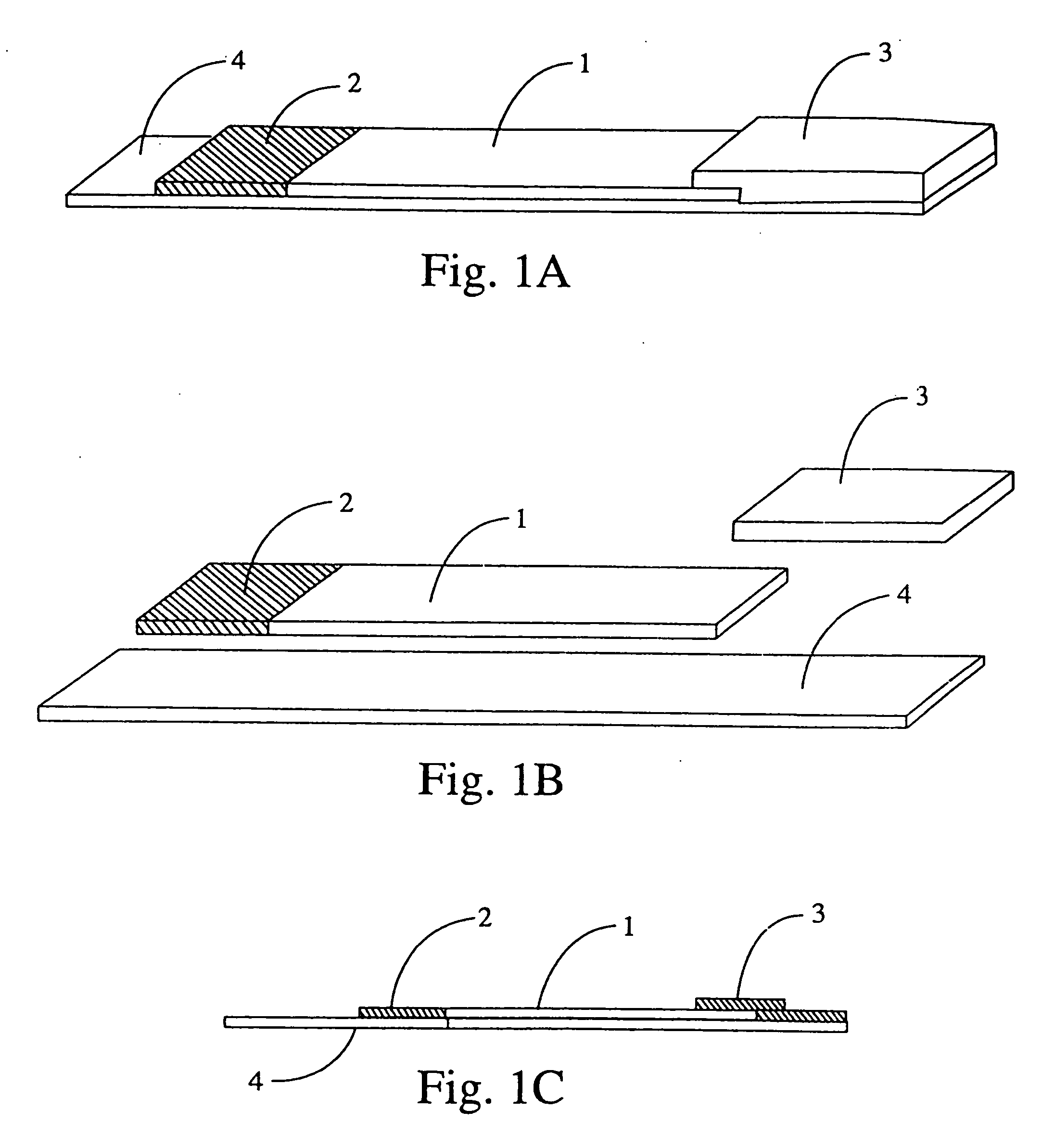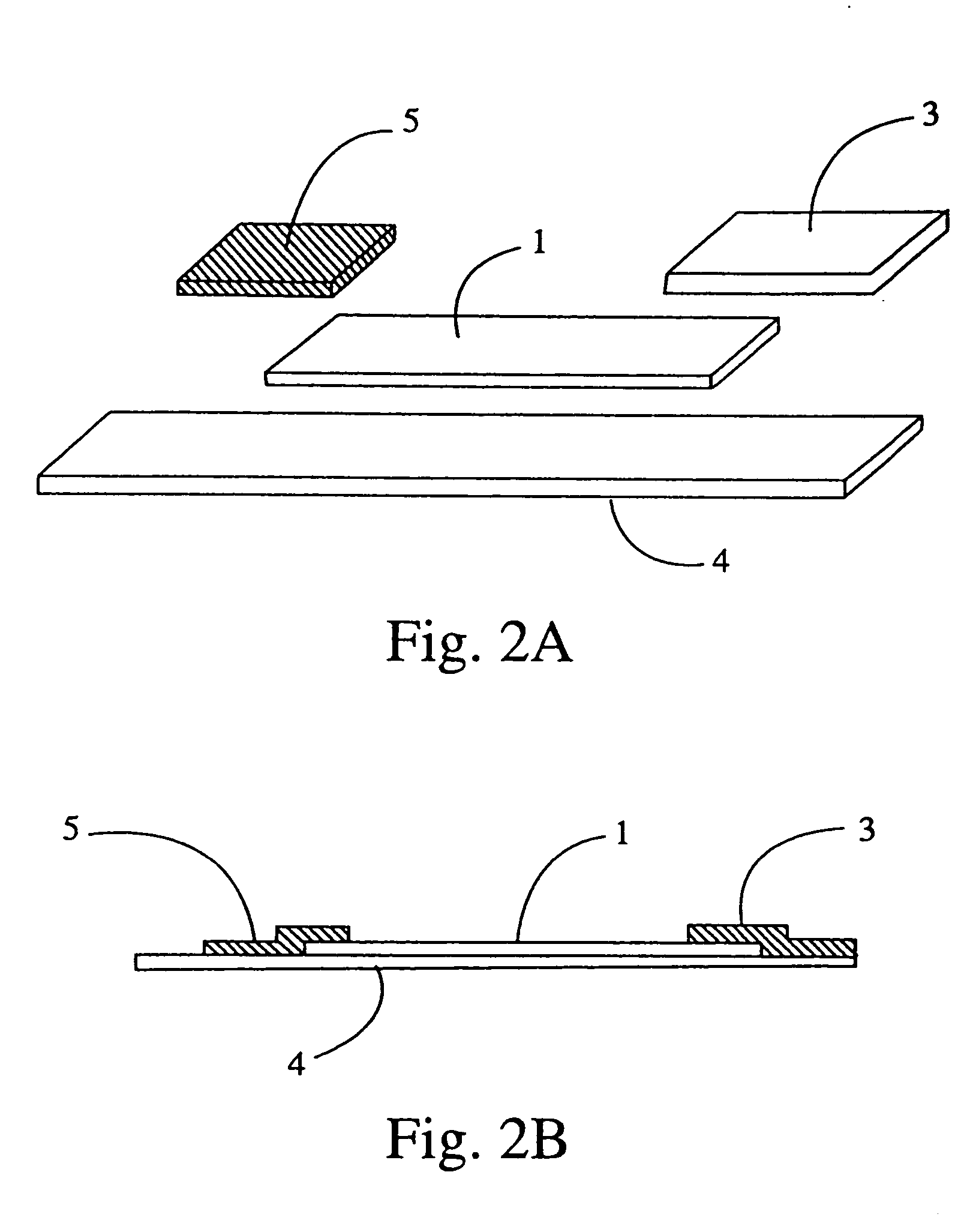Multi-functional and configurable assay
a multi-functional, configurable technology, applied in the field of ligandreceptor assays or immunoassays, can solve the problems of limited application of test strip format assays to semi-quantitative or qualitative assays, less accurate, less precise, etc., and achieves the effects of efficient conservation and isolation of analyte, rapid analysis, and simple operation
- Summary
- Abstract
- Description
- Claims
- Application Information
AI Technical Summary
Benefits of technology
Problems solved by technology
Method used
Image
Examples
example 1
[0140] A test strip is manufactured according to the description given in FIG. 1. The backing 4 is extended in length beyond the absorbent pad 3 end to allow application of bar codes, fluorescent markings, and other indicators to the backing 4. Reagent zone 2 contains streptavidin conjugated magnetic particles, buffers, stabilizers, surfactants, and other reagents in dry form.
[0141] The test strip 11 is inserted absorbent pad 3 end first into the optical tunnel 9. Indicators on the test strip are interpreted as calibration information by the analyzer. For example, the analyzer verifies that the same bar code was read at both focal points 8a and 8b and stores reflectance and fluorescence values for photodetectors 13 and 16. The calibration information and measured values are used by the analyzer to verify the quality and structure of an individual capture line as well as the amount of analyte, control, or calibrator present at the capture line, and to verify the performance of each ...
example 2
[0148] Example 2 mirrors Example 1 but for the following differences:
[0149] Reagent zone 2 contains all test reagents prepackaged in unit dose dried form including: streptavidin conjugated magnetic particles, biotin conjugated anti-beta HCG, and fluorescent microsphere conjugated anti-alpha HCG which cooperatively bind HCG molecules present in the sample. Reagent zone 2 also contains buffers, stabilizers, surfactants, and other reagents in dry form.
[0150] The operator adds a measured volume of test solution directly to reagent zone 2.
example 3
[0151] Example 3 mirrors Example 2 but for the following differences:
[0152] Anti-alpha HCG is conjugated using alkaline phosphatase, instead of fluorescent micro spheres.
[0153] A measured volume of fluorescent substrate is added to the reagent zone 2 subsequent to the addition of a measured volume of wash solution.
PUM
 Login to View More
Login to View More Abstract
Description
Claims
Application Information
 Login to View More
Login to View More - R&D
- Intellectual Property
- Life Sciences
- Materials
- Tech Scout
- Unparalleled Data Quality
- Higher Quality Content
- 60% Fewer Hallucinations
Browse by: Latest US Patents, China's latest patents, Technical Efficacy Thesaurus, Application Domain, Technology Topic, Popular Technical Reports.
© 2025 PatSnap. All rights reserved.Legal|Privacy policy|Modern Slavery Act Transparency Statement|Sitemap|About US| Contact US: help@patsnap.com



